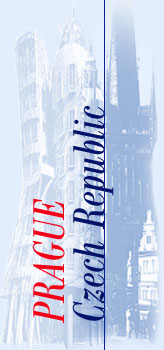EXCURSIONS OUT OF PRAGUE
KARLSTEJN CASTLE
It’s now more than six hundred years since the Czech King and Holy Roman Emperor Charles IV chose the site for Karlstejn. This became a place not only for the philosophical meditation of the head of an extensive empire, but also a stronghold for the crown jewels, a castle meant to protect the symbols of Czech statehood. The most famous Czech castle stands on a hill above the river Berounka, set amongst the wonderful landscape of the Cesky kras area. It offers its visitors a view into the famous past of the places that Charles IV chose for his relaxation. After many centuries, you can view the beautiful paintings of Master Theodoric as well and the rich decorations of the Chapel of the Holy Cross.
(Half-day excursion 4-5 hours)
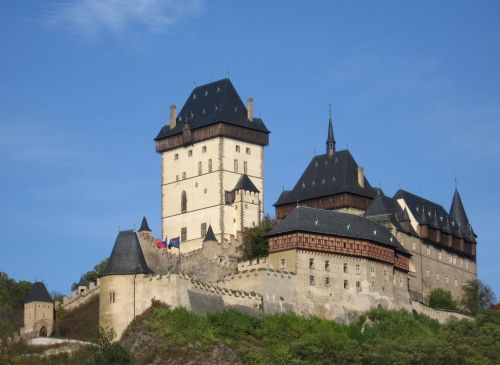
KONOPISTE CHATEAU
Prior to Franz Ferdinand dÉste’s assassination in Sarajevo, which was the pretext for the start of the First World War, he enjoyed a luxurious retreat on the outskirts of Benesov u Prahy built with all of that era’s modern conveniences. Built in the 13th century as a castle based on French design, Konopiste is today a beautiful example of how an originally defensive fortress can be converted into a luxurious chateau surrounded by an extensive hunting ground.
(Half-day excursion 5 hours)
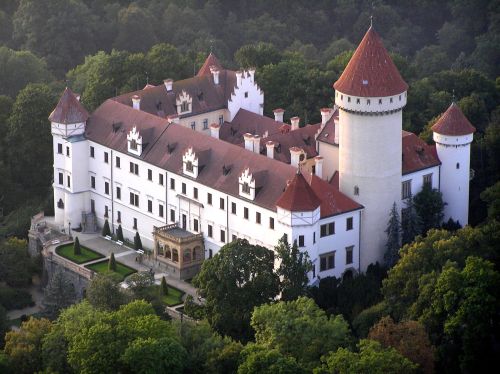
Karlstein and Konopiste:
Full day tour (10 hours).
KUTNÁ HORA (UNESCO listed town)
In the Middle Ages Kutna Hora was called the Bohemian Kingdom’s silver treasury thanks to its silver mines. The town enjoyed greatest prosperity under the rule of King Charles IV. Traces of its former wealth may be seen wherever you go: you will admire not only the magnificent late Gothic St. Barbara’s Cathedral, but also impressive residential houses that belonged to rich patricians, or richly decorated Late Gothic Stone Fountain at an upper square. The Czech Silver Museum offers a tour in the underground shafts under the town. The tour shows all steps of the production process that the iron ore used to undergo before, finally, coins were minted – Prague groschen. In the nearby village called Sedlec you find the Church of All Saints with its Ossuary, one of the most remarkable local historic monuments may be found. The decoration in its chapel, including the altar and chandeliers, is made from human skulls and bones; however the idea of this unique decoration is not to shock or scare visitors, but to remind them of the transience of human life.
(Half-day excursions 6 hours)
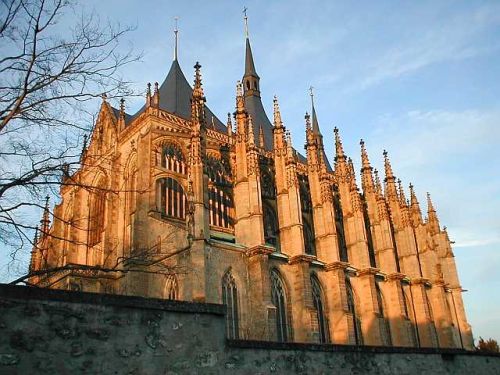
CESKY STERNBERK
The imposing medieval castle rising above the river Sazava is rightly described as one of the most significant monuments of castle architecture in the Czech lands. Here you can experience many architectural styles and see how the castle built in 1241 changed from a fortress to a comfortable aristocratic residence. In addition to this unique illustration of the skills of old masters, artists and craftsmen, you can also see a wholly exceptional collection of drawings featuring the theme of the Thirty-Year’s War.
BOHEMIA GLASS FACTORY
In the Czech Republic there are more than two hundred glassworks where famous crystal glass has been produced over centuries. If you feel like to get to know more about glass and its production accept our invitation to a prestigious Bohemian glass factory, where you can witness and admire craftmenship of the skilled glassmakers. In the factory ground there is also a shop where you can buy glass for a reasonable prices.
LIDICE
Half day tour (5 hours). Lidice is a village in the vicinity of Prague. It was razed to the ground by the Nazis on June 6, 1942. All the men were shot to death, the women deported to concentration camps and the children dispersed in Germany for so-called "re-education". After World War II, a new village was founded nearby. There is an anti-fascist monument on the site of the original Lidice and a rose garden with 30,000 rose bushes from all over the world, symbolizing friendship and peace among nations. An annual peace rally takes place in Lidice in June to commemorate the events.
TEREZÍN
Terezin, established as a fortress by the Austrian Emperor Joseph II, is notorious as Theresienstadt, according to its German name. During the Second World War, the Nazis turned the Terezin fortress into a concentration camp, a ghetto, through whose gates passed approximately 140 000 Jews from all over Europe; they were massed there before they were deported to extermination camps further east. Over 35 000 people died in Terezin itself. Moreover, the Small fortress next to the ghetto served as a police prison of the Gestapo. Shortly, after the end of the Second World War, the Terezin Memorial was created, with the aim of preserving this site of suffering to provide an enduring memory to future generations. The fortress itself is a remarkable architectural work; it took over ten years to build, the total fortress area covers almost 400 hectares; and the overall length of its underground passages connecting the individual parts amounts to 30 km. Considering its construction and strategic concept, Terezin ranks among the most sophisticated fortress structures in the world; undoubtedly, it is the top master work of fortress construction in the late 18th century.
(Half-day excursion 5 hours)
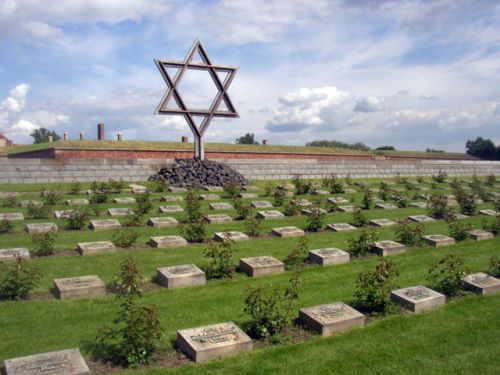
Terezin Memorial
KARLOVY VARY
West Bohemia has been world-famous for its tradition of providing treatment in mineral baths; Karlovy Vary, with its thirteen mineral springs that have curative effects (the hottest spring called The Geyser - Vridlo has temperature 72.2° Celsius.), is the best-known of West Bohemian spa towns. Moreover, a herb liqueur named “Becherovka”, which is produced there, is often called an additional one of Karlovy Vary’s curative springs. Also Karlovy Vary wafers, thin dinner-plate-sized crispy wafers, are well-known for their delicate taste. The town prospered most in the 19th century, when the majority of bath houses and the elegant colonnade connecting individual springs under one roof were built. Many prominent personalities undergo treatment and meet here. The town is also well-known for its exquisite porcelain and glass production (visit Moser factory), and typical local biscuits traditionally sold by street vendors. Like Cannes or Berlin, also Karlovy Vary hosts an A-category prestigious International Film Festival, where film fans, producers and, for sure, film stars meet every year in early July; this now traditional event was first held very soon after the Second World War. The events offered range from theatre performances, classical music concerts, film shows and art exhibitions in local galleries to casino visits or horse races. Karlovy Vary’s Golf Club takes pride in being the oldest golf course in the Czech republic.
(Full-day tour 10 hours)
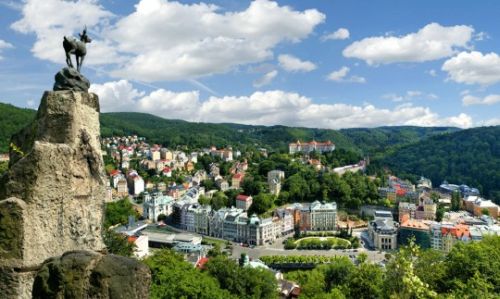
Karlovy Vary
MARIANSKE LAZNE
Full day tour (10 hours). Marianske Lazne is the country's second biggest spa town established in the 18th century. Unlike in Karlovy Vary, all the local mineral springs are cold. Most of the houses and colonnades were built in the 19th century. The beautiful architecture and numerous parks make Mariánské Lázně one of the most scenic towns in the Czech Republic. It is also an important cultural centre, hosting music festivals and many other events.
PODEBRADY
Half day tour (6 hours). Poděbrady is a spa town in East Bohemia specializing in treating heart diseases. Spa therapies using local mineral water began in 1908. Podìbrady's most important landmark is a castle founded in the 13th century and later rebuilt in Renaissance style. On the main square there are many historical town houses. The town is also known for the glassworks Bohemia. The glassworks was established in 1876 and specializes in hand-cut crystal. An excursion to the factory is part of the tour. Shopping in a factory store is available.
SOUTH BOHEMIA
Full day tour (10 hours) of České Budějovice and Hluboká Chateau. České Budějovice is the biggest town in South Bohemia with an attractive historical centre. Its main square with beautiful arcades and many old town houses is the biggest square in the country. The town is also known for Budweiser beer produced by the Budvar brewery since 1894. Hluboká is one of the most interesting Czech chateaux, located near České Budějovice. Originally a royal castle, it was remodelled in the late 19th century. The renovation was inspired by Windsor Castle. Hluboká's 140 rooms contain a valuable collection of tapestries, furniture and china. The chateau is surrounded by a beautiful park with rare plants.
HOLASOVICE & CESKE BUDEJOVICE
Despite of its medieval origin the Tudor gothic is the main feature that emphasizes the charm and the romanticism of this white fairy-tale castle surrounded by a large English park. Its laveshly decorated interriors, period furniture, weapons and unique Flamish tapestries attract thousands of visitors every year. Our trip continues further to Holasovice- a typical Czech village worldfamous for its unique rural Baroque architecture and before coming back to Prague we also visit Ceske Budejovice, the former royal town founded already in the 13th century where the famous beer Budweiser have been brewed over centuries.
CESKY KRUMLOV - UNESCO listed town
The medieval town located in the southern Bohemia that has still retained its medieval character. The mighty Renaissance castle - once the seat of the powerfull Lords of the Rožmberks and the Schwarzenbergs - houses rich collections of period furniture, Flamish tapestries, historical weapons. After a guided tour in the castle we will also visit its unique and exceptional baroque theatre. In the whole world there are only two theatres of this kind – in Sweden at the royal palace Drottningholm and at the Cesky Krumlov castle – that have been preserved in such an untouched baroque originality and authenticity without any former or modern alternatives until today. After lunch we will make a walk in the historical core of the city.
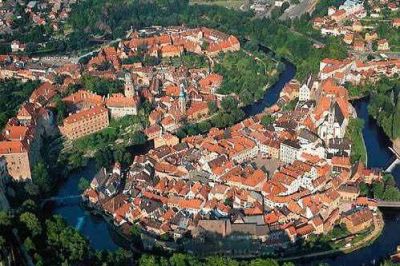
Cesky Krumlov
TELC & SLAVONICE
Telc and Slavonice are renaissance architectonic jewels amid beautiful hilly countryside surrounded by lakes - Telc which was once a royal water fort founded at the crossroads of major trade routes gained its Renaissance appereance, that has been preserved almost intact up to the present, after a devastating fire. After a guided tour around the lavishly decorated chateau´s interiors with coffered ceilings you can admire the large central square lined with gabled houses. Each of them has a different facade adorned with frescoes sgraffito or later Baroque and Rococo sculptures. Slavonice – the medieval merchant town located on the former Salt Trade Rout. There two medieval towns haven´t been discovered by tourists yet. |

